Simulation Software for Extraordinary and Emergency Situations
06. August, 2012, Autor článku: Juříková Lucie, Informačné technológie, Strojárstvo
Ročník 5, číslo 8  Pridať príspevok
Pridať príspevok
![]() The objective of this article is to point out software that is potentially usable when handling extraordinary and emergency situations. In the article an analysis of the chosen modelling software and a design of an imaginary improvised shelter are accomplished. This design is transferred to the simulation software where its options to model and simulate are applied. The possible behaviours of the air flow in the shelter are then examined from the perspective of the segmentation and construction of the shelter, pressures and other possible criteria.
The objective of this article is to point out software that is potentially usable when handling extraordinary and emergency situations. In the article an analysis of the chosen modelling software and a design of an imaginary improvised shelter are accomplished. This design is transferred to the simulation software where its options to model and simulate are applied. The possible behaviours of the air flow in the shelter are then examined from the perspective of the segmentation and construction of the shelter, pressures and other possible criteria.
The conclusion of the article suggests continuation of the research, namely from the perspective of a description of the penetration of dangerous substances into the interior of the shelter. Specifically, dangerous substances are chemical or biological substances within extraordinary and emergency situations.
Introduction
This article is focused on AutoCad and Solidworks modelling software. The software enables the designing of buildings and improvised shelters (IS) in particular, both from 2D and 3D perspective. The area of this research covers the protection of the population by sheltering. The essence of the research within this field is the designing of an IS. The design is based on the layout of a chosen IS, produced for instance using AutoCad software, and its consequent implementation into the modelling software.
The main objective of the research is, by means of these two types of software, to create a simulation model for extraordinary and emergency situations. This model would clearly define the process of the spread of chemical substances in the interior of shelter, rate of spread and contamination, influence of ambient conditions, etc.
1. Problem formulation
Currently, there is a Standard used within the research. It is a document to which the created designs for events of extraordinary and emergency situations will be recorded. The Standard is a basic element for IS designs. It includes all information necessary for construction and conversion designs, calculation of required values and planning of the sheltering. The suggested improvised shelter design will stem from the information in the Standard. The document will be available to authorized persons actively involved in solving these dangerous situations.
All designs and modifications of the shelter are processed by AutoCad software and partially also by Solidworks software. The market is a series of modeling and simulation programs that solve the simulation of hazardous substances into the air, but is currently not created a model that would deal with similar situations in the city of Zlin. The simulation model that would define the procedure NCHL of the accident spread into the air as a cloud, and would constitute a risk to the surrounding population.
2. Problem solution
An analysis of selected modeling and simulation programs will be found best programs for emergency and crisis situations. A detailed analysis will be selected not only the best programs for simulation, but also is found out difficulty in installation, handling and difficulty to create a model situation in the selected program.
3. Simulation software Autodesk Simulation CFD
The application Autodesk Simulation CFD (Computational Fluid Dynamics) analyses and simulates the behaviour of a product at an early stage of design. It employs the method of “computational fluid dynamics”. This advanced computational method generally simulates the fluid flow and heat transfer inside or around a digital prototype by means of mathematical laws. It offers a range of advanced functions, various models of heat transfer, laminar and turbulent flows, networking, calculations and the presentation of results.
Autodesk Simulation software accomplishes nonlinear static and dynamic analyses, simulates rigid and flexible body motions, and fluid flow (including fluid dynamics) and hydrostatic pressure; it further calculates combined voltage, electrostatics and it also combines analyses with multiphysical simulations. [1]
3.1 Analysis and the use of software in the research
By means of software, various model situations have been tested in the design of the imaginary shelter. Specifically, simulations of air flows inside the shelter at certain pressures and temperatures in the appropriately chosen shelter construction were tested. The input media and their distributions have been clearly defined.
3.2 Model situation created in Autodesk Simulation CFD
The following figures depict the simulation of the air flow inside the imaginary shelter with clearly defined parameters. The imaginary shelter created for the purposes of simulation is a building with 5 sections and without window openings in the basement of the building. Every section is equipped with an air inlet unit. In the back of the building there is an air outlet system. The possible inadequate performance of the computer had to be taken into consideration when creating a construction design of the imaginary shelter. Selected parameters for simulation:
- Input temperature of air = 19°C;
- Output temperature of air = 22°C;
- Velocity normal = 35km/h;
- Standard Velocity Magnitude = cca 20000m/s;
- Rotation = 3580 per/min;
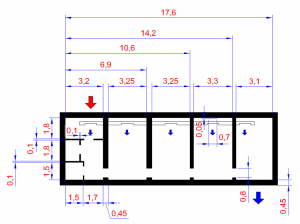
Fig. 1 The design of the imaginary shelter in 2D produced using AutoCad.
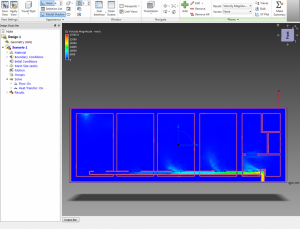
Fig. 2 The design of the imaginary shelter transferred into Autodesk Simulation CFD
In figure 2 we can see depiction the time period of the air flow velocity into the interior of the shelter; the values of the air flow velocity ranged from ones to tens of m/s.
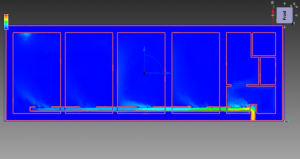
Fig. 3 The view of the air flow into the shelter within the next time period
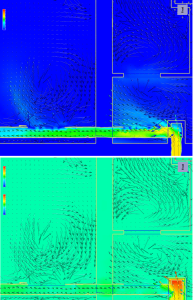
Fig. 4 Vector air flow in the shelter
Vector air flow from the inlet of the shelter; the upper figure depicts the velocity of the air flow, the bottom one depicts the air flow under dynamic pressure in the shelter.
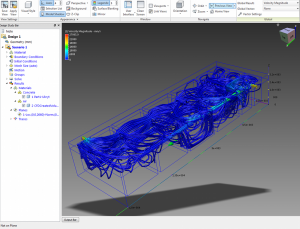
Fig. 5 Demonstration of the air flow simulation in Autodesk Simulation CFD
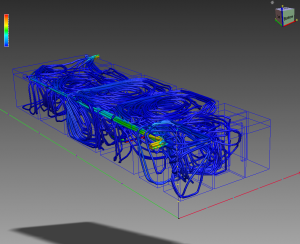
Fig. 6 The view of the simulated flow in the improvised shelter
Figure 6 shows yellow streamlines, that indicate the direction of air into the inlet and into the outlet in the back part; the yellow colour of flow indicates a higher velocity of air on entry into ventilation, while the blue colour shows direction and velocity of the air flow in individual sections.
4. The further part of research
As the analysis is in its initial phase, accurate real conditions and parameters of the shelter were not defined. The main objective of the article was to determine whether Autodesk Simulation software is suitable for this research. Within the first part of the analysis the model of the air flow in the shelter was tested and was successfully completed. A further part of the analysis will focus on the real conditions of the extraordinary and emergency situations and at the same time it will pay particular attention to the simulation of the spread of chemical substances during a chemical accident.
Not only is the objective of the analysis of the chosen simulation software used to point out the issue of various simulations in the field of population protection by sheltering but it is also to be used for design work in various companies. The analysis of simulation and modelling software can provide instructions for solving various model situations and at the same time notify other users about possible risks in addressing various simulations.
Within the research the analysis of the chosen simulation software is to be conducted (this includes, for example, Autodesk Simulation, Solidworks Flow, Cosmas or Airpak). The most suitable software will then be used in the field of population protection by sheltering, namely for the creation of the various model situations or simulations of events of extraordinary and emergency situations.
5. Conclusion
The aim of the research is to choose the most appropriate software for extraordinary and emergency situations. Within the next part of the research a model that is to simulate the penetration of chemical substances into the interior of the shelter from the accident site will be created. The model will include the determined kind of chemical substances, the analysis of these substances will be accomplished and then the model situation of the chemical accident will be created. In the model various parameters, such as the strength of the chemical substance, the influence of the chemical substance on humans or the location of ventilation in the shelter, will be defined. The generated model could provide assistance to the competent persons who are handling extraordinary and emergency situations.
This article has been supported by grant of IGA University of Thomas Bata in Zlin, Faculty of Applied informatics, number IGA/FAI/2012/054, IGA/FAI/2012/028 and by the European Regional Development Fund under the project CEBIA-Tech No. CZ.1.05/2.1.00/03.0089.
References
- Fořt P., Kletečka J., Autodesk Inventor : functional proposing in industrial practise, Brno : Computer Press, 2007, 318 p., ISBN 978-80-251-1773-6
- Jurikova L., Rak J., Adamek M., Suggestion of improvised shelter design, 13th WSEAS International Conference on AUTOMATIC, Canary Islands, Spain, 2011. ISBN: 978-1-61804-004-6
- Jurikova, L., Rak, J. Proposal for technology of improvised shelters design in conditions of the Czech republic, Annals of DAAAM for 2010 & Proccedings of the 21 st International DAAAM Symposium, Austria – Vienna: DAAAM International 2010. p. 1337. ISBN 978-3-901509-73-5
- L. Jurikova,,J.Rak, M. Adamek, The Population Protection by Sheltering – A Design of the Chosen Shelters under the Auspices of a Municipality, NAUN: International Journal of Mathematical models and methods in applied Sciences, www.naun.org, 2011, p. 1380-1387. ISSN: 1998-0140
- Spielmann, M., Špaček J., AutoCAD: Illustrative guide for versions 2010 a 2011, Brno : Computer Press, 2010, 431 p. ISBN 978-80-251-3120-6
Coauthor of this paper is Ing. Jakub Rak.

